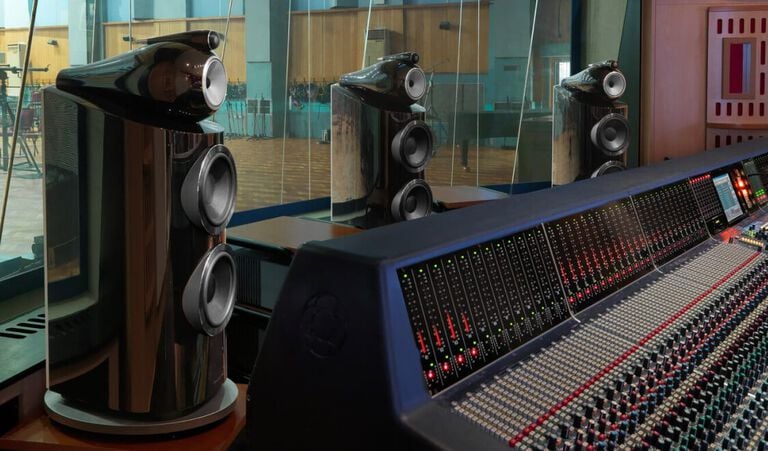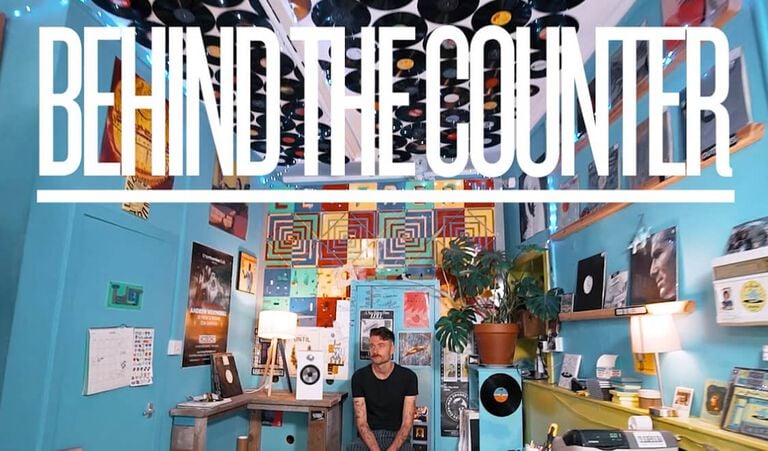The Legacy of Vinyl – Exploring Music’s Most Treasured Medium: Part 2
Vinyl listening and record collecting are certainly ritualistic. And, over the last few years, they’ve become routine for many music lovers once again.
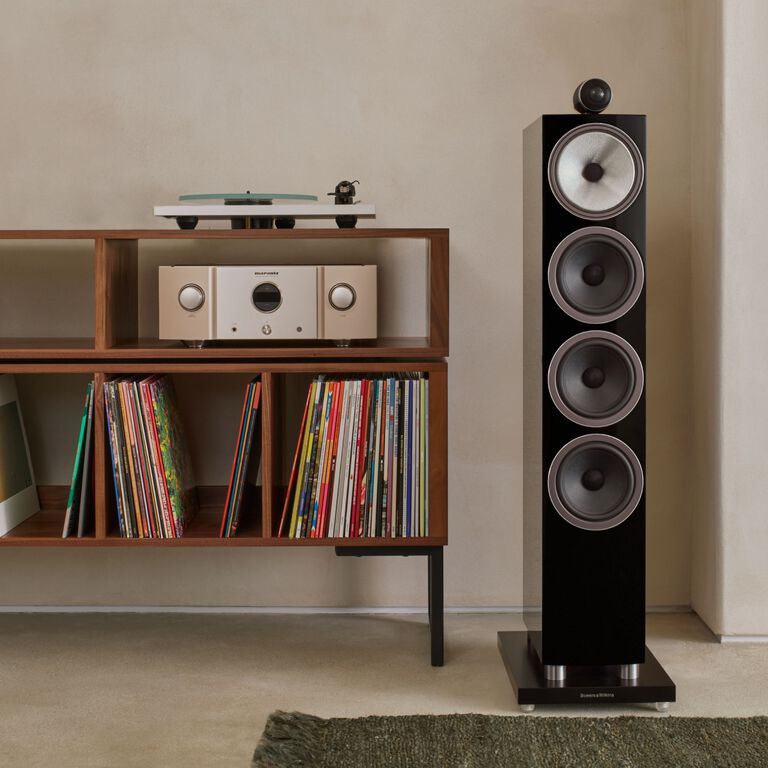
It’s fascinating when things from the past return, like a long-lost friend who greets you with memories of the good times you shared. Like that pair of Doc Martens you thought you’d lost forever in a house move or that song you used to love which, one day, seemed to vanish from your daily listening routine entirely.
Whether it’s nostalgia or just that comforting feeling you get from rediscovering something that was so dear to you at a particular time, the past evokes distinctive emotions.
While music can summon such strong feelings within us, the same could be said about our listening routines. You might enjoy putting the radio on every morning while you have your first coffee of the day or listening to your favourite album during the bustling commute to work. You may love selecting a record you’ve not given a spin in years, placing it on your turntable – playing it – and reminiscing about when you first bought it. We all have our rituals.
Vinyl listening and record collecting are certainly ritualistic. And, over the last few years, they’ve become routine for many music lovers once again.
But why? In the age of digital listening – with any artist, song or album at our fingertips – what’s driving this shift back to listening routines centred around physical media? In the first part of our blog series on the unique world of vinyl, we covered the “how”, delving into how vinyl is made, how it works, and the processes that go into preparing the music for these beautiful, culturally significant discs.
Now, we welcome you to part two, where Bowers & Wilkins explores the “why” behind the vinyl revival in an effort to discover what’s fuelling one of the greatest – and most unlikely – comebacks in music history.
A brief history
Before we delve into some of the reasons behind the rise in record buying and listening, it’s important to explore a bit of vinyl history to give some context to its resurgence. We covered some of this in Part 1, but for the benefit of readers joining us here, we’ll give a brief overview.
In the 1800s, 1857 to be exact, Édouard-Léon Scott de Martinville, a Frenchman obsessed with sound, invented the phonautograph – the earliest known device for recording sound. The phonautograph featured a horn connected to a diaphragm, which, when spoken or sung into, would send vibrations down to a stylus resting on a cylinder wrapped in carbonised paper. These vibrations would cause the stylus to move and, as a result, would engrave the vibrations onto the carbon paper as the cylinder turned.
It was this early sound recording device that inspired Thomas Edison to invent the first phonograph player in 1877. An evolution of Martinville’s phonautograph, the phonograph used similar technology that was not only able to record sound but also play it back. Ten years later, the phonograph technology was picked up by Alexander Graham Bell (the inventor of the telephone) and his team, who made a number of improvements to Edison’s design – most notably using wax around a cylinder to record sound rather than the foil cylinder of the phonograph. This became the graphophone.
The magic’s in the wax
Edison didn’t want to be outdone, so the technological back-and-forth between him and Bell continued. Edison reworked the design to feature an all-wax cylinder that could be shaved down and used again and again for re-recording. He called this the perfected phonograph.
The magic was in the wax – and after both agreed the all-wax cylinder was the better design choice, they shared the patent on the device. Now, here’s where things start to sound familiar. Emile Berliner, a German-American inventor, found that recording sound onto flat discs was much easier and more cost-effective. This innovation in recording sound laterally onto discs led Berliner to invent the gramophone – a device similar to the phonograph that played wax-coated discs with audio information etched onto the surface.
However, wax wasn't sustainable due to the risk of warping and scratches. This prompted Berliner to experiment with new materials for these early discs, resulting in the use of shellac before PVC became the most reliable material. PVC, aka Polyvinyl Chloride, remains the go-to for vinyl manufacturers due to its affordability and simplicity of production and stamping.
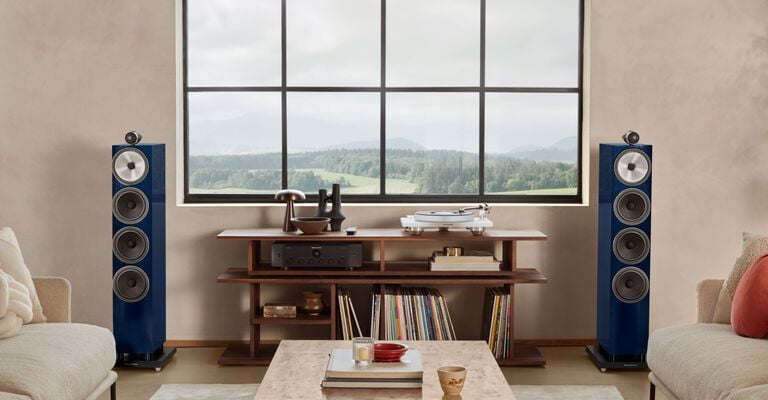
An evolution of listening
The popularity of the gramophone and its use of flat discs was like nothing that had come before it and paved the way for many modern-day turntables. As the advancements in record players and the quality of the records themselves improved in the 1950s and beyond, vinyl began to boom – and, by the 1960s, it had secured its place at the top of the musical playback food chain.
Things were going great for vinyl – mainstream artists relied on it to share their music and every music lover adored it for listening – but, in 1964, something would prompt a change.
1964 saw the invention of the compact cassette, aka the cassette tape. Developed by Lou Ottens for the Philips Company, tapes were significantly smaller, easier to carry and could hold a substantial amount of data. Although their quality wasn’t a match for vinyl, they were especially handy for making copies of music and in-car listening – a dream for many music lovers. Throughout the 1970s, the popularity of tape would only surge with the release of the first-ever portable tape player in 1979: the Sony Walkman.
Compact music media was everywhere, and personal, on-the-go listening became a big part of musical consumption. As time passed, new ways to store data and play music continued to emerge. From Floppy Discs to Boomboxes and 8-Track Players, the musical landscape was rapidly evolving.
But as history has taught us, there’s always a new and exciting technological revolution around the corner – and the next one changed listening behaviour forever.
The vinyl rival
Enter the Compact Disc aka CD – a musical medium that would claim to elevate listening further than ever before through unrivalled sound quality, storage capacity and convenience for both listeners and manufacturers.
After some close competition with Sony, Philips, the company behind the cassette tape, joined forces with Sony to develop the CD. This collaboration birthed the technology that would become the long-standing physical successor of vinyl and laid the groundwork for digital listening. It’s important to note that while CDs evolved the listening landscape, vinyl didn’t instantly vanish from the industry. While it remained a staple for some, its popularity began to decline.
By 1988, CDs outsold vinyl for the first time, becoming the most popular music medium for labels, artists, and listeners. This trend continued until the early 2000s when digital playback trumped all demand for physical media – followed by the dawn of streaming in the 2010s.
But then, in 2022, something remarkable happened: Vinyl – a music medium with such an elaborate and seemingly archaic listening experience – outsold CDs in the USA for the first time since 1987. Although vinyl sales were reported to have been creeping back up over the previous 16 years, vinyl finally took the top spot for the first time in over 20 years.
This was reported by The Recording Industry Association of America, which revealed that "revenues from vinyl records grew 17% to $1.2 billion—the sixteenth consecutive year of growth—and accounted for 71% of physical format revenues. For the first time since 1987, vinyl albums outsold CDs in units (41 million vs 33 million)."
This was big news for the music industry – an unexpected seismic shift was in the air. The vinyl revival was well and truly upon us.
The vinyl revival
So, what exactly is the vinyl revival? Well, put simply, it’s the significant rise in the popularity of vinyl records and their listening routines among music lovers – a cultural phenomenon that has caused vinyl sales to increase and more record shops to open to meet the demand.
Since 2017, vinyl sales have increased by 550%, with 2021 seeing a staggering 51.1% uptick from 2020, while CDs only saw a 1.1% increase in sales. It’s certainly hard to ignore.
But here’s our question again – why is this all happening? A good place to start is to consider why people buy records in the first place. It’s evident that a love for music plays a big part, but in the digital age, where streaming dominates the musical landscape, what is it about physical media that’s making it relevant once again?
Collecting and connecting
Collecting is part of human nature. Whether it’s antiques, comic books, fine art or Air Max trainers, stockpiling coveted items is ubiquitous.
Since records have existed, music lovers have collected them. Before digital listening rose to prominence, owning physical copies of music was basically the only way to listen to your favourite albums and songs over and over again without seeing them performed live. Record collecting remains a passion and a hobby; it creates a sense of belonging to the vinyl community – and for some music lovers, it’s a lifestyle.
Our ownership of music feels important. That's not to say that digital listening is totally soulless, but it just doesn’t provide the same satisfaction that spending your money on something physical does. Again, it’s ritualistic. You search for your record, purchase it and take it home – unless you’re having it delivered – unwrap the plastic, remove it from the sleeve, place it on your turntable and begin listening. There’s a sense of focus and dedication to the full playthrough – an experience that brings you closer to the music.
It’s safe to say that owning physical copies of your favourite sounds also provides you with a deeper connection to the artists you adore. As well as helping support those behind the music featured on them, records offer a tangible counterpart to the listening experience – something you can hold, touch, explore and soak in while immersed in the music. And, when so much time and effort go into creating the music, the beautiful artwork on the sleeves – and the production of the vinyl itself – it’s no surprise that music lovers want the whole package.
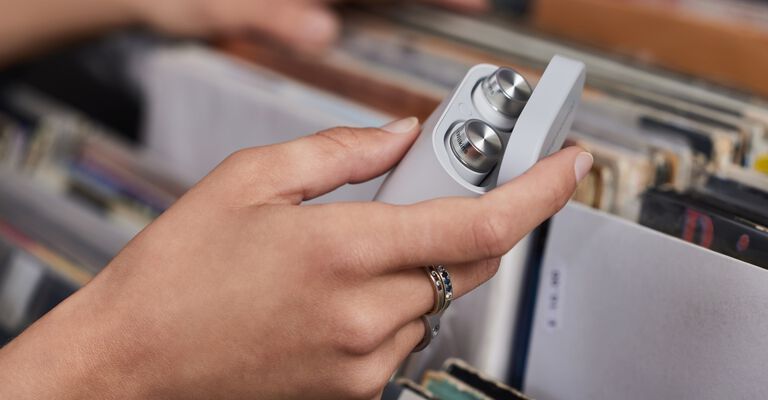
Lockdown listening
There was a time when these solitary home-listening experiences were the only listening experiences for many. During the 2020 COVID pandemic, fans weren’t able to connect with the artists they love through in-person live performances, so they took the time to upgrade their dedicated listening setups and invest in vinyl for its high-quality, warm sound.
And, with this, vinyl sales soared. According to MusicWatch, 2021 saw a 27% increase in global vinyl sales from 2020, with an estimated 18 million people above the age of 13 purchasing a record during 2021.
However, as the lockdown measures eased and we were all let out of our homes back into the big, wide world – where live performances were available once again – people still loved collecting records.
Dedicated vinyl events
The same report from MusicWatch noted that 95% of buyers who began collecting vinyl during the pandemic planned to continue purchasing records that year – and that they did.
The vinyl comeback continued to gain traction, with 2022 marking the 15th consecutive year of sales growth, boasting an expected 5.5 million units sold in the UK alone. This was great news not only for vinyl lovers, artists, and the music business but also for those behind vinyl-centric events.
Events such as Record Store Day, which revolve around vinyl and record collecting, aren’t necessarily new – or a result of the vinyl revival – but their existence is both fuelling and being fuelled by it. They serve as a place for the vinyl-loving community to come together to celebrate music and the culture that surrounds it and get their hands on new and exclusive vinyl while helping support local independent record stores. People attend in droves, queues stretch down the high streets, and millions of pounds are spent – it’s all for vinyl.
If you’re remotely invested in modern music culture, you’ll likely have heard of Record Store Day. It started in 2007, with the first taking place in April of 2008, as a way for record store owners and staff to celebrate the unique culture of independently owned record shops and spread the word to the masses.
Now, it’s enjoyed by thousands of music lovers each year who attend bricks-and-mortar record stores around the globe, drawn in by the festivities and exclusives on offer. As well as vinyl lovers – and the 260+ stores who take part – labels and artists not only join in with the festivities by hosting parties, live shows and meet-and-greets but also produce limited, ultra-special edition records for the cause. Again – a record collector or reseller’s dream.
It's clear Record Store Day is making a notable impact on the vinyl revival. The Digital Entertainment and Retail Association (ERA) estimated that records and exclusives sold on Record Store Day in 2023 accounted for nearly 10% of annual sales of all physical music media, and the number of independent record stores has now hit a 10-year high. Let that sink in.
We recently spoke to Geoff Pesche, a mastering engineer at Abbey Road Studios, about all things vinyl. He cited Record Store Day as one of the key elements behind its resurgence.
“Well, Record Store Day is fuelling it,” he tells us. “I think that people in the digital age are falling back towards analogue because it's tangible. Playing a record is an event. You take the record out of the sleeve, put it on the turntable, lift the needle onto it, sit down and have a cup of tea. It's not like dragging something out of iTunes and just hitting a button on your computer.”
“Record Store Day opened up so many more avenues for people who are on the cusp of vinyl. Once the big artists started getting involved and making records collectibles, lots of people began buying vinyl records and not even taking them out of the shrink wrap. They just keep them as ornaments, as trophies.”
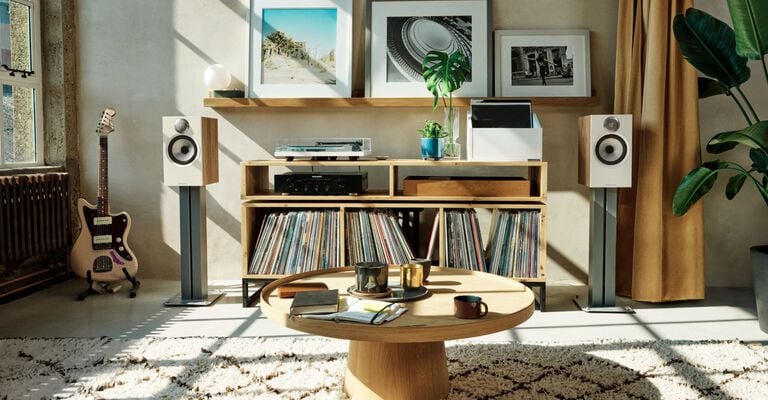
Listening together
Classic Album Sundays is another key player within this community. The classic-album-listening event series, which occurs on numerous dates throughout each year, centres around listening to a classic album that has shaped music culture – and, in some cases, listeners’ lives – telling the stories behind these musical works. In an age where music is so disposable, Classic Album Sundays drops the needle back on listening rituals, allowing attendees to experience the music “contextually, communally, uninterrupted, and in the best sonic detail possible.”
While Record Store Day and Classic Album Sundays cater to our beloved record shops and listening routines, the Independent Label Market focuses on those behind the music. Since 2011, they’ve carefully curated events where independent record labels from both sides of the Atlantic sell their fresh produce to music fans. When attending, you can expect traditional market stalls stocked with rarities, test pressings, exclusive merch from the labels involved and more. Their aim is to showcase that while streaming dominates, music retail can still be a social affair. It’s about the community – groups of like-minded music lovers and creators connecting in the real world, something that seems primarily absent from the realms of digital listening.
We love to see it. Expertly curated events brought to us by integral members of the music community – with a focus on supporting the cause. And what’s more exciting is there are plenty of other events like this out there; all you need to do is look.
Expanding audiences
It’s not just the old guard who attends the events and buys these rare records and remastered masterpieces. Vinyl events have opened a gateway for the next generation of music lovers, introducing them to broader music culture and helping them engage with the vinyl community. This younger audience is serious about buying vinyl, too.
According to data from Billboard, in 2021, the 25-34 age group accounted for 21% of all new vinyl record sales, rivalling the 55+ demographic which also made up 21%. The 34-55s and 45-54s again matched with 19% each and, what’s most encouraging, the 18-24s purchased 14% while 13-17s drove 7% of sales.
Many would associate vinyl with the older generation, old records and long-established artists – like your Fleetwood Macs and Pink Floyds – but judging from the current state of vinyl sales, it’s clear that contemporary artists are making a lot of noise. And that’s down to the fans.
In 2023, the top-selling vinyl record in the UK was from none other than Taylor Swift, with 1989 (Taylor’s Version) selling a grand total of 84,700 units. This was just one of three of her albums to feature in the UK Top 10, with eight making it into the top 40 vinyl records altogether.
Of course, she is one of the biggest artists on the planet and boasts a cult-like following, but it is impressive that an artist with an audience primarily made up of youngsters – or Swifties as they like to be called – who were born well after the heyday of vinyl is topping the vinyl charts.
It wasn’t just Taylor Swift who contributed handsomely to last year’s vinyl sales. Other current artists who made waves in 2023 included, Lana Del Rey, Olivia Rodrigo and Lewis Capaldi. Where there’s a dedicated fan base, music will sell no matter the media.
Classic never goes out of style
That said, it’s interesting to see some classic records reaching peak numbers in today’s market. Rolling Stones’ Hackney Diamonds claimed no.2 in the UK Top 10 vinyl albums of 2023, and the Beatles ranked no.1 in the vinyl singles chart with “Now And Then.” And it doesn’t stop there. Looking at the top-selling records of the last century reveals that many classic albums still have life in them. Michael Jackson’s Thriller, The Eagles’ The Greatest Hits 1971 – 1975 and AC/DC’s Back in Black have each accumulated upward of 40 million sales globally.
Even the aforementioned Fleetwood Mac and Pink Floyd are back in the mainstream. Data from the Official Charts shows that Rumours and Dark Side Of The Moon topped The Official Top 40 best-selling vinyl albums of the 21st century (1970-1999), followed by Nirvana’s Nevermind and Oasis’ (What’s The Story) Morning Glory?
It’s not just the original versions of these classic albums piquing the interest of vinyl lovers. Reissues, which include remastered music, new sleeve artwork and special edition picture discs, fuel a significant amount of hype.
We spoke with Paul Morgan, the owner of a new record shop in Haslemere, Surrey, about his findings in the vinyl world. He explained that “Fleetwood Mac Rumours has been our best seller since we got here, by far. That’s new versions and second-hand copies.”
Paul opened Record Plant in October 2023 and has since seen this diverse audience range come into play: “We've got a lot of youngsters coming in who will buy one or two records a month. And they’re not always buying older stuff but are quite often buying classic stuff.”
Music is timeless, and much like this, vinyl is too. New albums are undoubtedly driving vinyl sales and introducing a younger audience to the club, but it looks like these new-age music lovers want a slice of vinyl history in their collections – something that pays homage to the medium itself.
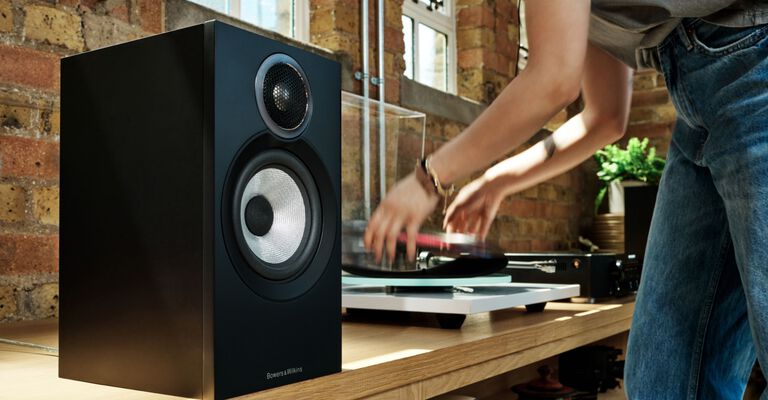
Surfing or digging?
With a growing number of records purchased each year by an expanding audience demographic, it’s as good a time as ever to get into the record-selling game. This hasn’t gone unnoticed. According to the ERA, 2024 marked a 10-year high for new independent record stores opening in the UK, boasting a total of 461 stores vs 339 ten years ago. And while Record Store Day and other vinyl events that celebrate these shops usually occur on one day each year, the stores are open all year round.
There are so many ways to buy records. Whether it’s crate digging at independent record stores and charity shops, browsing the endless aisles at megastores like HMV or purchasing records online, there’s no shortage of avenues.
Buying online can be easy. With only a few clicks, you can search for exactly what you want and find it. Scrolling through endless web pages on Discogs or eBay can seem tedious, but it expands your search to the wider world – and some enjoy this approach. While the ease of online vinyl shopping is appealing, there’s usually an additional shipping cost involved – but many vinyl fans are willing to part with a bit of extra cash to get their hands on those highly sought-after releases.
Although online record retail caters to anyone with a working internet connection and a means for browsing, there are a couple of treasured things missing: the magic of the hunt, the people you meet along the way and instant ownership.
Devoted to vinyl
Again, much like listening to vinyl, buying vinyl in the physical world is sensory. Flicking through the stacks of new and pre-loved vinyl, feeling the texture of the sleeves between your fingers and smelling that distinctive vinyl scent no record collector could forget. Finally, the triumph of finding that hidden gem – or a mysterious white label you have the urge to take home for a spin.
Local, independent record stores are simply the best for this. They’re the beating heart of the vinyl community and serve as a place where patrons come to pick up new records, attend events, discuss music and create lasting memories and friendships. It’s brilliant to see many more of these opening.
Setting the record straight
The cultural significance of vinyl is extraordinary. From its devoted following to its unexpected comeback, there has never been another medium quite like it – and the fact that it’s having a revival some 80 years after its inception is remarkable.
Following our exploration of contemporary vinyl culture, it’s clear there’s no one thing fuelling its resurgence – but many. In the digital age, fans want to get as close to the music they love as possible. Whether this is at dedicated events, record shops and listening parties – or in their front rooms – vinyl offers a tangible, expertly crafted counterpart to the listening experience. Vinyl provides you with a piece of the music – a statement for your collection, a connection to the sounds and scenes you adore. Plus, it’s an invitation to the welcoming vinyl community.
And while modern-day artists and labels continue to cater to vinyl fans and independent record shops continue to open, the next generation of vinyl lovers – and vinyl itself – will undoubtedly thrive. What does the future hold for vinyl? We can’t tell you that – but if the present is anything to go by, it’s looking increasingly promising.
Browse some of our related articles
